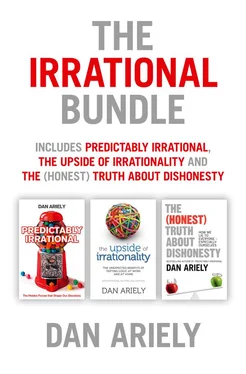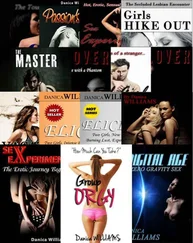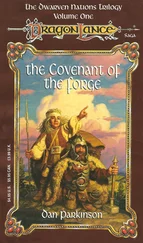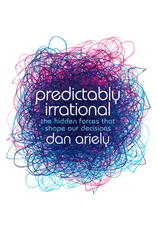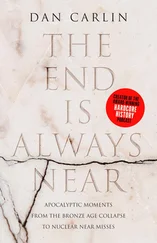Dan Ariely - The Irrational Bundle
Здесь есть возможность читать онлайн «Dan Ariely - The Irrational Bundle» — ознакомительный отрывок электронной книги совершенно бесплатно, а после прочтения отрывка купить полную версию. В некоторых случаях можно слушать аудио, скачать через торрент в формате fb2 и присутствует краткое содержание. Жанр: unrecognised, на английском языке. Описание произведения, (предисловие) а так же отзывы посетителей доступны на портале библиотеки ЛибКат.
- Название:The Irrational Bundle
- Автор:
- Жанр:
- Год:неизвестен
- ISBN:нет данных
- Рейтинг книги:3 / 5. Голосов: 1
-
Избранное:Добавить в избранное
- Отзывы:
-
Ваша оценка:
- 60
- 1
- 2
- 3
- 4
- 5
The Irrational Bundle: краткое содержание, описание и аннотация
Предлагаем к чтению аннотацию, описание, краткое содержание или предисловие (зависит от того, что написал сам автор книги «The Irrational Bundle»). Если вы не нашли необходимую информацию о книге — напишите в комментариях, мы постараемся отыскать её.
The Irrational Bundle — читать онлайн ознакомительный отрывок
Ниже представлен текст книги, разбитый по страницам. Система сохранения места последней прочитанной страницы, позволяет с удобством читать онлайн бесплатно книгу «The Irrational Bundle», без необходимости каждый раз заново искать на чём Вы остановились. Поставьте закладку, и сможете в любой момент перейти на страницу, на которой закончили чтение.
Интервал:
Закладка:
Moreover, since we wanted to understand whether participants would be able to predict how they would behave in a particular emotional state, the emotion needed to be one that was already quite familiar to them. That made our decision easy. If there’s anything predictable and familiar about twentysomething male college students, it’s the regularity with which they experience sexual arousal.
ROY, AN AFFABLE, studious biology major at Berkeley, is in a sweat—and not over finals. Propped up in the single bed of his darkened dorm room, he’s masturbating rapidly with his right hand. With his left, he’s using a one-handed keyboard to manipulate a Saran-wrapped laptop computer. As he idles through pictures of buxom naked women lolling around in various erotic poses, his heart pounds ever more loudly in his chest.
As he becomes increasingly excited, Roy adjusts the “arousal meter” on the computer screen upward. As he reaches the bright red “high” zone, a question pops up on the screen:
Could you enjoy sex with someone you hated?
Roy moves his left hand to a scale that ranges from “no” to “yes” and taps his answer. The next question appears: “Would you slip a woman a drug to increase the chance that she would have sex with you?”
Again, Roy selects his answer, and a new question pops up. “Would you always use a condom?”
BERKELEY ITSELF IS a dichotomous place. It was a site of antiestablishment riots in the 1960s, and people in the Bay Area snarkily refer to the famously left-of-center city as the “People’s Republic of Berkeley.” But the large campus itself draws a surprisingly conformist population of top-level students. In a survey of incoming freshmen in 2004, only 51.2 percent of the respondents thought of themselves as liberal. More than one-third (36 percent) deemed their views middle-of-the-road, and 12 percent claimed to be conservatives. To my surprise, when I arrived at Berkeley, I found that the students were in general not very wild, rebellious, or likely to take risks.
The ads we posted around Sproul Plaza read as follows: “Wanted: Male research participants, heterosexual, 18 years-plus, for a study on decision making and arousal.” The ad noted that the experimental sessions would demand about an hour of the participants’ time, that the participants would be paid $10 per session, and that the experiments could involve sexually arousing material. Those interested in applying could respond to Mike, the research assistant, by e-mail.
For this study, we decided to seek out only men. In terms of sex, their wiring is a lot simpler than that of women (as we concluded after much discussion among ourselves and our assistants, both male and female). A copy of Playboy and a darkened room were about all we’d need for a high degree of success.
Another concern was getting the project approved at MIT’s Sloan School of Management (where I had my primary appointment). This was an ordeal in itself. Before allowing the research to begin, Dean Richard Schmalensee assigned a committee, consisting mostly of women, to examine the project. This committee had several concerns. What if a participant uncovered repressed memories of sexual abuse as a result of the research? Suppose a participant found that he or she was a sex addict? Their questions seemed unwarranted to me, since any college student with a computer and an Internet connection can get hold of the most graphic pornography imaginable.
Although the business school was stymied by this project, I was fortunate to have a position at MIT’s Media Lab as well, and Walter Bender, who was the head of the lab, happily approved the project. I was on my way. But my experience with MIT’s Sloan School made it clear that even half a century after Kinsey, and despite its substantial importance, sex is still largely a taboo subject for a study—at least at some institutions.
IN ANY CASE, our ads went out; and, college men being what they are, we soon had a long list of hearty fellows awaiting the chance to participate—including Roy.
Roy, in fact, was typical of most of the 25 participants in our study. Born and raised in San Francisco, he was accomplished, intelligent, and kind—the type of kid every prospective mother-in-law dreams of. Roy played Chopin études on the piano and liked to dance to techno music. He had earned straight A’s throughout high school, where he was captain of the varsity volleyball team. He sympathized with libertarians and tended to vote Republican. Friendly and amiable, he had a steady girlfriend who he’d been dating for a year. He planned to go to medical school and had a weakness for spicy California-roll sushi and for the salads at Cafe Intermezzo.
Roy met with our student research assistant, Mike, at Strada coffee shop—Berkeley’s patio-style percolator for many an intellectual thought, including the idea for the solution to Fermat’s last theorem. Mike was slender and tall, with short hair, an artistic air, and an engaging smile.
Mike shook hands with Roy, and they sat down. “Thanks for answering our ad, Roy,” Mike said, pulling out a few sheets of paper and placing them on the table. “First, let’s go over the consent forms.”
Mike intoned the ritual decree: The study was about decision making and sexual arousal. Participation was voluntary. Data would be confidential. Participants had the right to contact the committee in charge of protecting the rights of those participating in experiments, and so on.
Roy nodded and nodded. You couldn’t find a more agreeable participant.
“You can stop the experiment at any time,” Mike concluded. “Everything understood?”
“Yes,” Roy said. He grabbed a pen and signed. Mike shook his hand.
“Great!” Mike took a cloth bag out of his knapsack. “Here’s what’s going to happen.” He unwrapped an Apple iBook computer and opened it up. In addition to the standard keyboard, Roy saw a 12-key multicolored keypad.
“It’s a specially equipped computer,” Mike explained. “Please use only this keypad to respond.” He touched the keys on the colored pad. “We’ll give you a code to enter, and this code will let you start the experiment. During the session, you’ll be asked a series of questions to which you can answer on a scale ranging between ‘no’ and ‘yes.’ If you think you would like the activity described in the question, answer ‘yes,’ and if you think you would not, answer ‘no.’ Remember that you’re being asked to predict how you would behave and what kind of activities you would like when aroused.”
Roy nodded.
“We’ll ask you to sit in your bed, and set the computer up on a chair on the left side of your bed, in clear sight and reach of your bed,” Mike went on. “Place the keypad next to you so that you can use it without any difficulty, and be sure you’re alone.”
Roy’s eyes twinkled a little.
“When you finish with the session, e-mail me and we will meet again, and you’ll get your ten bucks.”
Mike didn’t tell Roy about the questions themselves. The session started by asking Roy to imagine that he was sexually aroused, and to answer all the questions as he would if he were aroused. One set of questions asked about sexual
preferences. Would he, for example, find women’s shoes erotic? Could he imagine being attracted to a 50-year-old woman? Could it be fun to have sex with someone who was extremely fat? Could having sex with someone he hated be enjoyable? Would it be fun to get tied up or to tie someone else up? Could “just kissing” be frustrating?
A second set of questions asked about the likelihood of engaging in immoral behaviors such as date rape. Would Roy tell a woman that he loved her to increase the chance that she would have sex with him? Would he encourage a date to drink to increase the chance that she would have sex with him? Would he keep trying to have sex after a date had said “no”?
Читать дальшеИнтервал:
Закладка:
Похожие книги на «The Irrational Bundle»
Представляем Вашему вниманию похожие книги на «The Irrational Bundle» списком для выбора. Мы отобрали схожую по названию и смыслу литературу в надежде предоставить читателям больше вариантов отыскать новые, интересные, ещё непрочитанные произведения.
Обсуждение, отзывы о книге «The Irrational Bundle» и просто собственные мнения читателей. Оставьте ваши комментарии, напишите, что Вы думаете о произведении, его смысле или главных героях. Укажите что конкретно понравилось, а что нет, и почему Вы так считаете.
